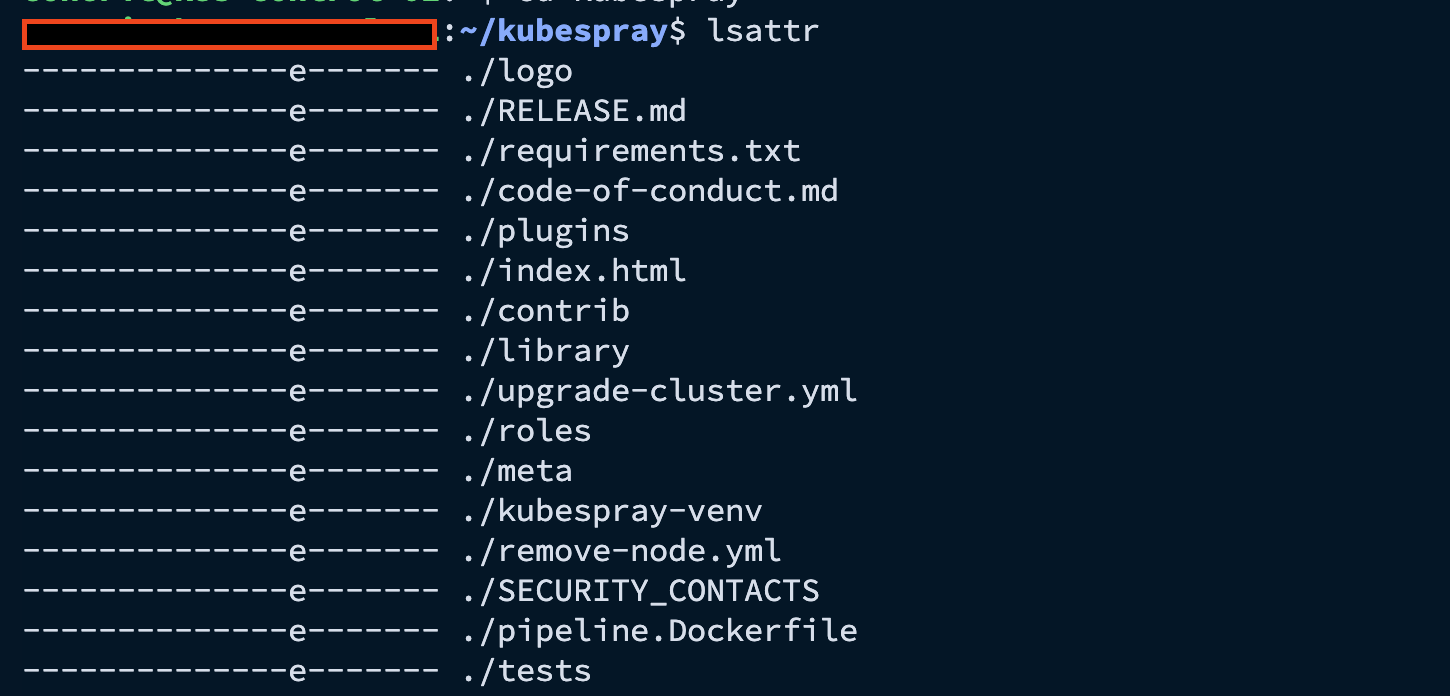12 min to read
Understanding chattr and lsattr - Linux File Attribute Management
Learn how to use chattr and lsattr commands for file attribute management

What are File Attributes in Linux?
Linux file attributes are special properties assigned to files and directories that control how the system handles these objects at a fundamental level.
Unlike standard permissions (read/write/execute), file attributes can prevent modifications even by the root user, providing an additional layer of system security and data integrity.
Why Use File Attributes?
- Protection Against Root: Safeguard critical files even from root users or compromised accounts
- System Integrity: Prevent accidental modification of essential configuration files
- Log Security: Ensure log files cannot be altered to hide intrusion evidence
- Data Recovery: Support improved methods for file recovery after deletion
- Performance Optimization: Specific attributes can improve file system performance
The chattr and lsattr Commands
| Command | Purpose | Privilege Level |
|---|---|---|
chattr |
Change file attributes on a Linux file system | Requires root privileges for most attributes |
lsattr |
Display file attributes on a Linux file system | Can be executed by any user (viewing only) |
File Systems Supporting Attributes
File attributes are primarily supported on:
- ext2, ext3, and ext4 file systems (most complete support)
- XFS (partial support)
- Btrfs (partial support)
- JFS (limited support)
File attributes do not work on all file systems. Notably, they don't function on network file systems like NFS, temporary file systems (tmpfs), or non-Linux file systems like NTFS or FAT32.
chattr Command Syntax and Options
The basic syntax for chattr is:
chattr [options] [operator][attributes] file(s)
Operators
| Operator | Function |
|---|---|
+ |
Add the specified attributes |
- |
Remove the specified attributes |
= |
Set the attributes to exactly the specified values, clearing all others |
Common Options
| Option | Description |
|---|---|
-R |
Recursively change attributes of directories and their contents |
-V |
Be verbose and display the program version |
-f |
Suppress most error messages |
-v version |
Set the file's version/generation number |
lsattr Command Syntax and Options
The basic syntax for lsattr is:
lsattr [options] file(s)
Common Options
| Option | Description |
|---|---|
-R |
Recursively list attributes of directories and their contents |
-a |
List all files, including those whose names begin with a dot |
-d |
List directories like other files, rather than listing their contents |
-l |
Print the options using long names instead of single-character codes |
-v |
Display the file's version/generation number |
File Attributes Explained
Each attribute serves a specific purpose and is represented by a single letter in the output of lsattr.
| Attribute | Name | Description | Use Case |
|---|---|---|---|
a |
Append Only | File can only be opened in append mode for writing | Secure logs, audit trails, financial records |
i |
Immutable | File cannot be modified, deleted, renamed, or linked to | Critical system files, configuration files, SSL certificates |
s |
Secure Deletion | When deleted, blocks are zeroed and written to disk | Sensitive files containing personal or financial data |
u |
Undeletable | File content is saved when the file is deleted | Important files that might need recovery |
A |
No Atime | Access time record isn't modified | Frequently accessed files to reduce disk I/O |
c |
Compressed | File is compressed on disk automatically | Large, rarely modified files to save space |
d |
No Dump | File is skipped by the dump backup utility | Temporary files, caches, or other non-essential files |
j |
Journal Data | File data is journaled, not just metadata | Critical data files requiring maximum integrity |
S |
Synchronous | Changes are written synchronously to disk | Database files, critical application data |
t |
No Tail-merging | Partial block fragments not combined with other files | Specific applications with special I/O requirements |
e |
Extent Format | File is using extents for mapping blocks on disk | Large files with contiguous blocks |
Practical Examples with Detailed Explanations
1. Protecting Critical System Files
The immutable attribute (i) is perfect for protecting system configuration files:
# Make a DNS configuration file immutable
sudo chattr +i /etc/resolv.conf
lsattr /etc/resolv.conf
# Output: ----i-------- /etc/resolv.conf
# Even root cannot modify it now
sudo echo "nameserver 8.8.8.8" > /etc/resolv.conf
# Output: -bash: /etc/resolv.conf: Operation not permitted
# To edit the file, first remove the immutable attribute
sudo chattr -i /etc/resolv.conf
sudo echo "nameserver 8.8.8.8" > /etc/resolv.conf
# Now the modification works
2. Securing Log Files
The append-only attribute (a) is ideal for log files:
# Set append-only attribute on a log file
sudo chattr +a /var/log/auth.log
lsattr /var/log/auth.log
# Output: -----a------- /var/log/auth.log
# You can append to the file
echo "Test log entry" >> /var/log/auth.log # This works
# But you cannot truncate or modify existing content
echo "Replacing content" > /var/log/auth.log # This fails
# Output: -bash: /var/log/auth.log: Operation not permitted
3. Combining Attributes for Maximum Protection
Multiple attributes can be combined for enhanced security:
# Make a file both immutable and set for secure deletion
sudo chattr +is important_document.pdf
lsattr important_document.pdf
# Output: ---s-i-------- important_document.pdf
# This file cannot be modified, and when the immutable flag is removed
# and the file is deleted, its contents will be securely wiped
4. Working with Directories Recursively
Apply attributes to entire directory structures:
# Protect an entire SSL certificates directory recursively
sudo chattr -R +i /etc/ssl/certs/
lsattr -R /etc/ssl/certs/ | head -5
# Sample output:
# ----i-------- /etc/ssl/certs/ca-certificates.crt
# ----i-------- /etc/ssl/certs/ca-bundle.crt
# ----i-------- /etc/ssl/certs/DigiCert_Global_Root_CA.pem
# ----i-------- /etc/ssl/certs/GlobalSign_Root_CA.pem
# ----i-------- /etc/ssl/certs/GeoTrust_Global_CA.pem
5. Performance Optimization with No-atime
Reduce disk I/O for frequently accessed files:
# Prevent frequent atime updates for a database file
sudo chattr +A /var/lib/mysql/database.ibd
lsattr /var/lib/mysql/database.ibd
# Output: ---A---------- /var/lib/mysql/database.ibd
# This reduces disk I/O by preventing access time updates
Real-World Use Cases and Scenarios
Server Hardening
For production server hardening, it’s common practice to make critical system files immutable:
sudo chattr +i /etc/passwd /etc/shadow /etc/group /etc/gshadow
sudo chattr +i /etc/ssh/sshd_config
sudo chattr +i /etc/fstab<
- This prevents modification even if an attacker gains root access. Remember to remove the attribute when legitimate updates are needed.
Security Compliance
For security compliance such as PCI-DSS, system logs must be protected from tampering:
sudo chattr +a /var/log/audit/audit.log
sudo chattr +a /var/log/messages
sudo chattr +a /var/log/auth.log
- This ensures log integrity while still allowing normal logging operations.
Database Files Protection
For database servers, certain files should use synchronous writes:
sudo chattr +S /var/lib/mysql/ib_logfile0
sudo chattr +S /var/lib/mysql/ib_logfile1
- This ensures critical database journal files are immediately written to disk, reducing the risk of data corruption during power failures.
Best Practices and Considerations
Security Best Practices
System Protection Strategy
- Document All Changes - Keep a record of all files with special attributes to maintain visibility of what has been protected and why.
- Automation Scripts - Create scripts to apply and remove attributes during maintenance windows, ensuring consistent and repeatable processes.
- Regular Audits - Periodically verify file attributes are still applied and functioning as expected to catch any changes or issues.
- Change Management - Include attribute changes in your change management process to ensure proper approval and documentation.
- Backup Considerations - Ensure backup systems handle immutable files properly and can restore them with correct attributes intact.
Potential Issues and Solutions
- System Updates: Package managers may fail if they can't modify immutable files
- Application Compatibility: Some applications might not expect file attribute restrictions
- Backup Integration: Some backup solutions might fail with certain attributes
- Recovery Challenges: Immutable files may complicate disaster recovery procedures
- Create automation to temporarily remove attributes during updates
- Test application behavior with protected files before implementing in production
- Verify backup software compatibility with your attribute strategy
- Include attribute management in your recovery documentation
Script Example: Managing Attributes During System Updates
#!/bin/bash
# Script to temporarily remove immutable flags for system update
# Files to manage
PROTECTED_FILES=("/etc/passwd" "/etc/shadow" "/etc/ssh/sshd_config" "/etc/fstab")
# Remove immutable attribute
echo "Removing immutable attribute for system update..."
for file in "${PROTECTED_FILES[@]}"; do
if [ -f "$file" ]; then
sudo chattr -i "$file"
echo "Attribute removed from $file"
fi
done
# Perform system update
echo "Running system update..."
sudo apt update && sudo apt upgrade -y
# Or for RHEL-based systems: sudo yum update -y
# Restore immutable attribute
echo "Restoring immutable attribute..."
for file in "${PROTECTED_FILES[@]}"; do
if [ -f "$file" ]; then
sudo chattr +i "$file"
echo "Attribute restored to $file"
fi
done
echo "System update completed with protected files managed."
Limitations and Alternatives
Limitations of File Attributes
- File System Dependence: Only works on Linux native file systems (primarily ext2/3/4)
- No Network Support: Doesn’t work on NFS, CIFS, or other network file systems
- Limited Portability: Attributes don’t transfer when copying files to different file systems
- Not Bulletproof: Hardware access or booting from alternate media can bypass protections
Alternative Approaches
| Alternative | Description |
|---|---|
| SELinux / AppArmor | Mandatory Access Control systems that can restrict even root access based on policy |
| Filesystem ACLs | More granular permission controls using setfacl and getfacl |
| Read-Only Mounts | Mount file systems as read-only using mount options |
| IMA/EVM | Integrity Measurement Architecture provides file integrity verification |
| AIDE/Tripwire | File integrity checking software that detects unauthorized changes |
Troubleshooting and Common Errors
Common Errors and Troubleshooting
Error: Operation not permitted
If you get this error while trying to set attributes, check the following: Ensure you’re using sudo or have root privileges for the operation. Check if the file system supports the specific attribute since XFS has limited support for certain attributes. Verify the file isn’t on a read-only mount which would prevent any modifications.
Error: Inappropriate ioctl for device
This typically means the file system doesn’t support chattr operations. Check the file system type using df -T /path/to/file to identify what you’re working with. NFS, tmpfs, and non-native file systems don’t support attributes, so you’ll need to use alternative protection methods.
Package Management Failures
If package updates fail with permission errors, follow this process: Identify which files have immutable attributes using lsattr /path/to/dir to see what’s protected. Temporarily remove attributes with sudo chattr -i /path/to/file to allow the update process. Complete the package update normally. Restore attributes after the update to maintain your protection strategy.
Summary
- File attributes provide system-level protection beyond traditional permissions
- The immutable (
i) attribute prevents all modifications, even by root - The append-only (
a) attribute is ideal for securing logs - Attributes are file system dependent and work best on ext2/3/4
- Combining file attributes with other security measures creates a robust defense strategy
- Always document attribute changes and plan for maintenance windows


Comments